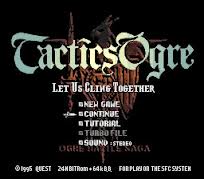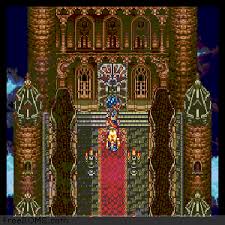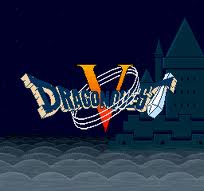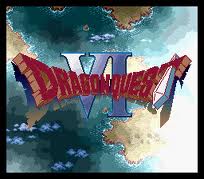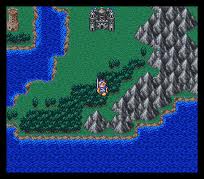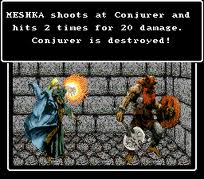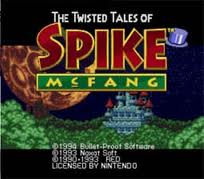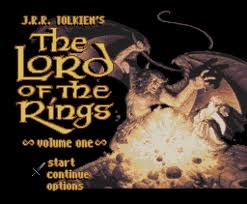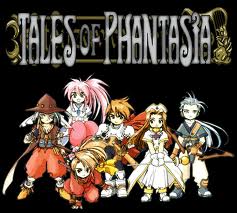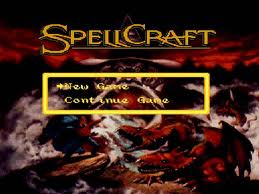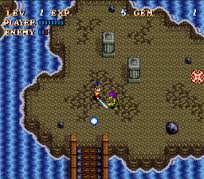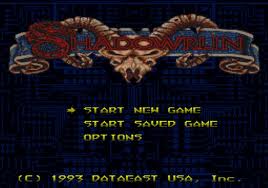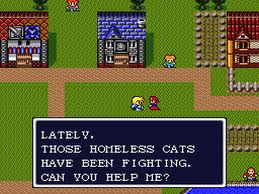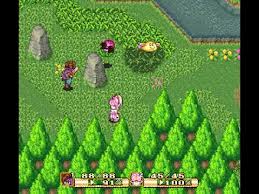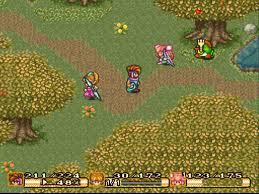Category: RPG
102 game(s)All RPG Games for SNES
Tactics Ogre: Let Us Cling Together
Tactics Ogre: Let Us Cling Together (タクティクスオウガ Takutikusu Ōga?) is a Japanese tactical role-playing game created by Quest. The game was originally released in 1995 on the Super Famicom in Japan and then re-released on the Sega Saturn in 1996 and the PlayStation in 1997.[4] An enhanced port of the game developed by the original development team was released on February 15, 2011 for the PSP. In some regions, notably Japan, the remake was retitled as Tactics Ogre: Wheel of Fate.
Though Let Us Cling Together is the second entry released in the Ogre Battle franchise, it featured dramatically different gameplay than its predecessor. While Ogre Battle: The March of the Black Queen was more akin to a grand strategy RPG, Let Us Cling Together was a more intimate squad-based isometric tactical RPG. Let Us Cling Together, then, launched a sub-series within the franchise with Tactics Ogre being used to distinguish the two forms of gameplay in later sequels (notably Tactics Ogre: The Knight of Lodis).
Dragon Quest I & II
Dragon Quest V - Tenkuu no Hanayome
Dragon Quest V: Hand of the Heavenly Bride (ドラゴンクエストV 天空の花嫁 Doragon Kuesuto Faibu Tenkū no Hanayome?, lit. "Dragon Quest V: The Heavenly Bride"), known as Dragon Quest: The Hand of the Heavenly Bride in Europe,[7] is a role-playing video game and the fifth installment in the Dragon Quest video game series. Originally developed by Chunsoft and published by Enix Corporation, Dragon Quest V was the first title in the series to be released for the Nintendo Super Famicom (SFC) video game console in Japan on September 27, 1992. It has since been remade for the PlayStation 2 in 2004; which was developed by ArtePiazza and Matrix Software,[1] and published by Square Enix only in Japan. Another remake was made for the Nintendo DS,[8] and was released on July 17, 2008 in Japan.[2] The remake was also released in North America[9] and Europe,[7] marking the first time the game had an official release in either territory. The game was released on February 17, 2009 for the North American market. A version of the game for Android and iOS has been announced for release in Japan in Winter 2014.[6]
Along with Dragon Quest VI: Realms of Revelation, the original Super Famicom release never reached North America. In the absence of an official translation, several fan translations were created between 1998 and 2002,[10] followed by a more recent fan translation of the PlayStation 2 remake.[11]
Dragon Quest V takes place over roughly thirty years of the main character's life, from when he is born through to when he gets married and has a family. The title introduced a gameplay dynamic in which monsters from random encounters may offer to join the player's party. This concept was used in later Dragon Quest games, and in the Dragon Quest Monsters series constituted the primary way to form a party.
Dragon Quest VI - Maboroshi no Daichi
Dragon Quest III
Wizardry V: Heart of the Maelstrom
Wizardry V: Heart of the Maelstrom is the fifth scenario in the Wizardry series of role-playing video games. It was published in 1988 by Sir-Tech Software, Inc. for the Commodore 64, Apple II and as a PC booter (using DOS). A port for the SNES and FM Towns was later developed and published by ASCII Entertainment in Japan. Wizardry V was released in the US for the Super Nintendo Entertainment System by Capcom in April 1994, and subsequently re-released for the Satellaview subsystem under then name BS Wizardry 5.
The Twisted Tales of Spike McFang
The Twisted Tales of Spike McFang (Japanese: 超魔界大戦!どらぼっちゃん Hepburn: Chō Makai Taisen! Dorabotchan?, lit. "Ultra Demon World War! Little Dorabo"), is an action role-playing video game which was released for the Super Nintendo Entertainment System (SNES), developed by Bullet Proof Software and Red Company, and published by Naxat Soft. It was published by Bullet-Proof Software in North America. The game is the sequel to the TurboGrafx-16 game Makai Prince Dorabotchan, which was only released in Japan.
The Lord of the Rings - Volume One
J.R.R. Tolkien's The Lord of the Rings, Vol. I is the name of a video game published by Interplay Productions for the Super Nintendo. It is an adaptation of The Fellowship of the Ring by J. R. R. Tolkien.
Tales of Phantasia
Tales of Phantasia (Japanese: テイルズ オブ ファンタジア, Hepburn: Teiruzu obu Fantajia?) is a role-playing video game originally developed by Telenet Japan's "Wolf Team" as the first title in Namco's Tales series. Initially released for the Japanese Super Famicom in December 1995, it was later ported to a number of other platforms including a Japan-exclusive version for the PlayStation in December 1998, and a Game Boy Advance version available in Japan in August 2003, followed by English releases in North America and Europe in March 2006. A PlayStation Portable remake known as Tales of Phantasia Full Voice Edition (テイルズ オブ ファンタジア-フルボイスエディション-, Teiruzu obu Fantajia -Furu Boisu Edishon-?) followed in September 2006 featuring full voice-acting during story scenes, which was later included with further enhancements as part of Tales of Phantasia: Narikiri Dungeon X in June 2010. The game's producers have given it the characteristic genre name Legendary RPG (伝説のRPG, Densetsu no RPG?) beginning with the PlayStation version, with the Full Voice Edition given the moniker Legendary RPG Embellished with Voices (声が彩る、伝説のRPG, Koe ga irodoru, densetsu no RPG?).
This game was originally developed by Wolf Team. It was written and programmed by Yoshiharu Gotanda, designed by Masaki Norimoto, and scored by Motoi Sakuraba and Shinji Tamura. The character designs were created by manga artist Kōsuke Fujishima. A short anime series based on the game, called Tales of Phantasia: The Animation, was released in 2004.
SpellCraft
Spellcraft: Aspects of Valor is a strategy game by the relatively unknown developer, Asciisoft.
Soul Blazer
Shadowrun
Shadowrun is a cyberpunk-fantasy action role-playing video game for the Super Nintendo Entertainment System (SNES), adapted from the tabletop role-playing game Shadowrun by FASA. The video game was developed by Australian company Beam Software and first released in 1993 by Data East.
The game is loosely based on the novel Never Deal with a Dragon by Shadowrun co-creator Robert N. Charrette and set in the year 2050. The player takes on the role of Jake Armitage, a man suffering from amnesia after having been critically wounded by assassins. The plot then follows Jake as he attempts to uncover his own identity and the identity of the mysterious figure who wants him dead, and eventually complete his mission. Harebrained Schemes' 2013 Shadowrun Returns links the stories of this game and of Shadowrun for the Sega Genesis.
A project to adapt Shadowrun for the SNES had a turbulent history between 1989 and 1993, including having been halted in mid-development before being resumed in late 1992 under a tight deadline. Its eventual lead designer was Paul Kidd, creator of Beam Software's 1992 Nightshade, elements and a feel of which he then carried on to Shadowrun. The game was a critical success, winning a number of industry awards, but was a commercial failure nevertheless. It was retrospectively acclaimed by several publications as an "ahead of its time" milestone in the history of the role-playing genre for the consoles and credited for having pioneered film noir style in video games.
Secret of the Stars
Secret of mana 2 - Seiken Densetsu 3
Seiken Densetsu 3 (聖剣伝説3?, lit. "Legend of the Sacred Sword 3") is a 1995 action role-playing game developed and published by Square (now Square Enix) for the Super Nintendo Entertainment System. It is the sequel to the 1993 game Seiken Densetsu 2 (released outside Japan as Secret of Mana), and is the third game in the Mana series. Set in a fantasy world, the game follows three heroes as they attempt to claim the legendary Mana Sword and prevent the Mana Beasts from being unleashed and destroying the world. The game features three lengthy main plotlines and six different possible main characters, each with their own storylines, and allows two players to play simultaneously. The game builds on the gameplay of its predecessor with multiple enhancements, including the use of a time progression system, with transitions from day to night and weekday to weekday in game time, and a wide range of character classes to choose from, which provides each character with an exclusive set of skills and status progression.
The game was designed by series creator Koichi Ishii, directed by veteran Square designer Hiromichi Tanaka, and produced by Tetsuhisa Tsuruzono. Artwork for the game was produced by manga and anime artist Nobuteru Yūki, while the game's music was composed by Secret of Mana composer Hiroki Kikuta. Although the game was only published in Japan, Western players have been able to play Seiken Densetsu 3 thanks to an unofficial English fan translation, first released in 2000. The game received considerable acclaim from reviewers, who praised the graphics as among the best ever made for the Super Nintendo and the gameplay as an improved version of its predecessor's. The plot received mixed reviews by critics who found the overlapping stories to be interesting and enhance replayability, but the characters and plotlines themselves to be flat and clichéd. Overall, the game is considered to be a Super Nintendo classic and one of the best role-playing games of the 16-bit era.
Secret of Mana
Secret of Mana, originally released in Japan as Seiken Densetsu 2 (聖剣伝説2?, lit. "Legend of the Sacred Sword 2"), is a 1993 action role-playing game developed and published by Square (now Square Enix) for the SNES. It is the sequel to the 1991 game Seiken Densetsu, released in North America as Final Fantasy Adventure and Europe as Mystic Quest, and its release marked the transition of the Seiken Densetsu series's marketing from a thinly-related spinoff of the Final Fantasy series to the wholly separate Mana series. Set in a fantasy world, the game follows three heroes as they attempt first to restore the legendary Mana Sword, then to prevent the Empire from releasing the Mana Fortress, and finally to prevent the ancient sorcerer Thanatos from destroying the Mana Tree and taking control of the world's magic.
